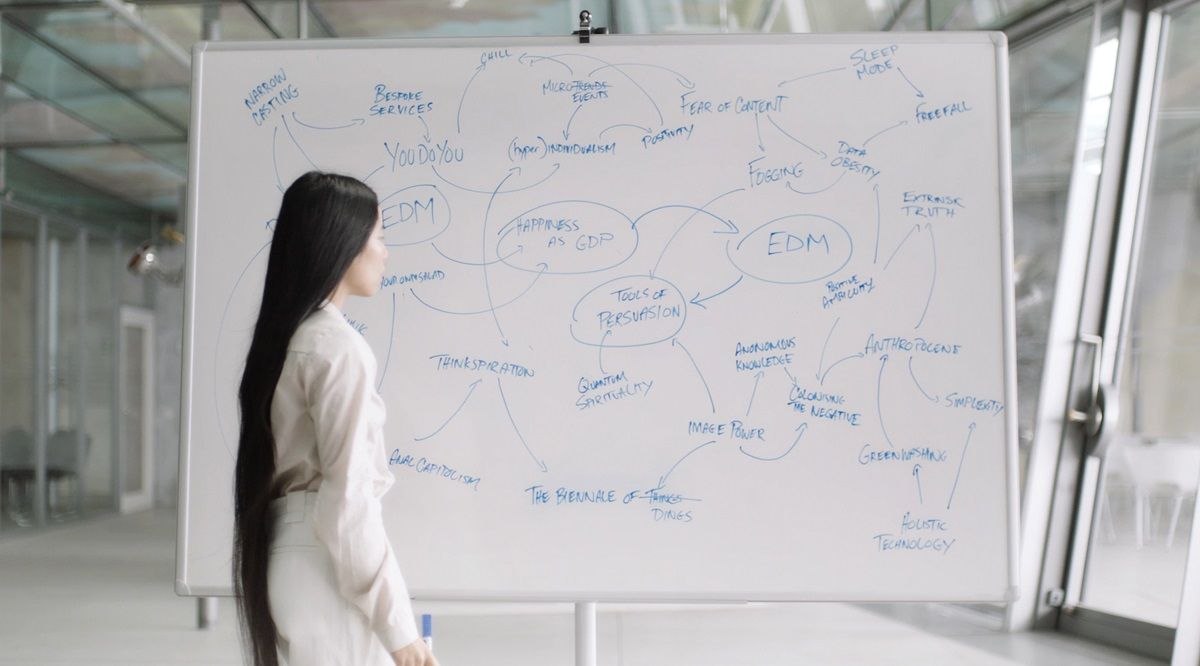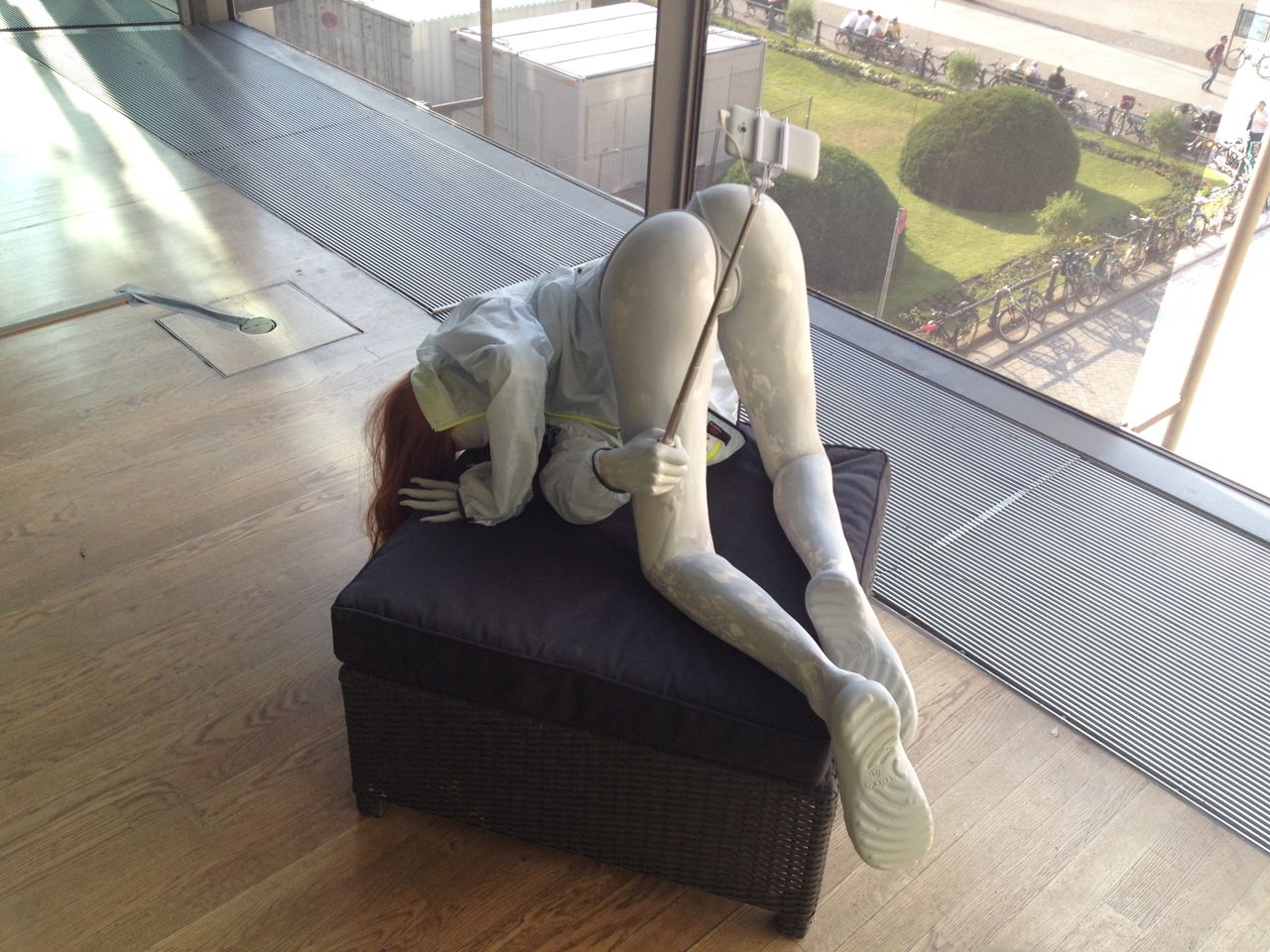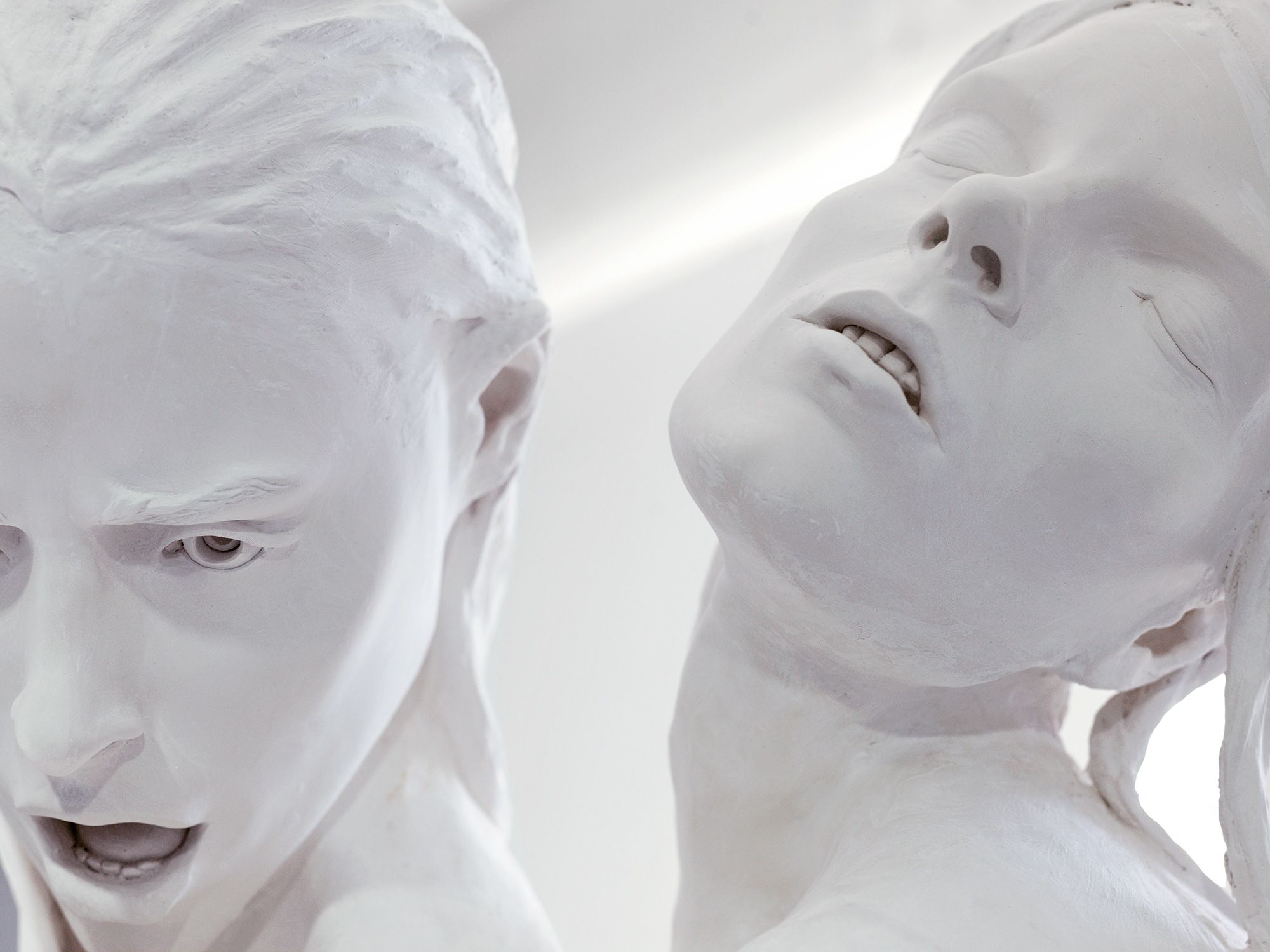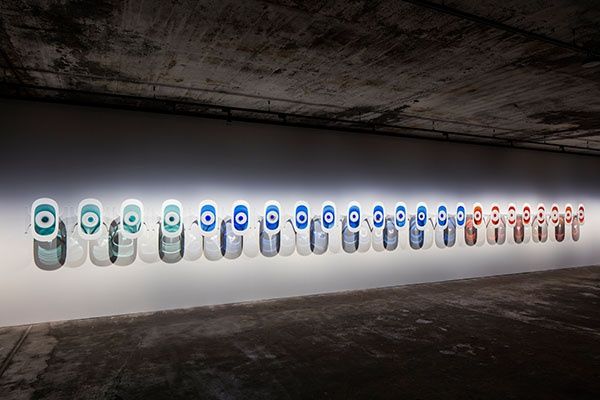While queer and drag methods historically have a clear utopian and liberating potential insofar as they presented the possibility of deconstructing the culturally normative identities and ideals that the former conservative cultures have forced upon its individuals, today, in the context of digital mass culture, there is no conservative standard for images and fantasies. If at all, we are dealing with a new kind of norm of the Californian type.
The revolutionary content of this new dominant ideology consists of the dream of identities without essence, of vital affect bodies without subjectivity, but full of pure energetic presence and performance that is expressed in the form of ceaselessly self-optimizing bodies and creativity. It is for this reason that the curators also included artists like Nik Kosmas or Helga Wretman who perform these new normative ideals of self-optimization in an event series called Open Workout. And, the immaterial ideal of the Californian type is itself reflected and investigated by a number of artists like Débora Delmar Corp, Christopher Kulendram Thomas, or Sean Raspent.
The artist enterprise Débora Delmar Corp. produces the juice MINT, an acronym for the emerging global economies like Mexico, Indonesia, Nigeria, and Turkey. The drink can be purchased and consumed at a bar, which includes furniture and sculptures that simulate a typical hipster environment, which often also functions to simulate the morally valuable idea of green eco-sustainability. Since one does not only consume liquid fruit here, not even art, but the Californian dream of an aspirational, green, sustainable and healthy eco-lifestyle, the drink comes, not unlike real eco-smoothies, with a price. Christopher Kulendran Thomas replaces his artistic identity with a new entrepreneurial form of self-design. Thomas creates a promotional booth of a show home environment for his start-up New Eelam (2016), in which one finds a pseudo-documentary about Sri Lanka's recent history that turns into a real-estate promotional video for luxury housing and a brochure that envisions a globalized future life without national borders, but only economic barriers that are marked by the free and happy exchange of goods and people.
Sean Raspet, who designs abstract flavor and chemically based formulations, works also for the California-based brand Soylent, which breaks down food into its basic structure in order to produce it in a more sustainable, rational and efficient manner. Raspet uses the Biennale to distribute 2000 samples of Soylent 0.10 and reminds the viewer and potential consumer that the remaining left-overs of bourgeois taste, which culminates in the desire for extravagant cuisine, wine and liquor, is historically as relative as the long gone bourgeois capability of aesthetic judgment in art.
The appreciation of food presupposes not only a naturalist and geographic referent like an exclusive Champagne, but, as the former appreciation of so-called high art, it affords most of all cultural discipline, training and repression in order to not only achieve an exclusive aesthetic judgment subjectively, but to rationally and objectively defend it culturally—it presupposes cultural techniques that, from an techno-utopian future perspective that Raspet represents here already as a profane Californian reality, seem increasingly outdated.









